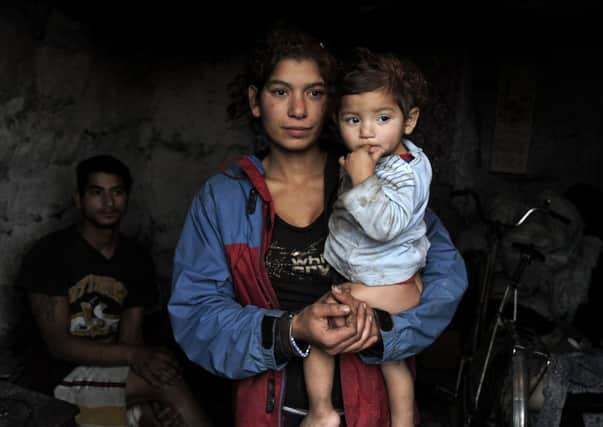Book review: The Story Of The Romani Gypsies


I Met Lucky People: The Story Of The Romani Gypsies
Yaron Matras
Allen Lane £20
IN OCTOBER last year police in Ireland, acting on tip-offs from the public, seized two children from two Roma couples and took them into care amid fears that they had been abducted from their real parents. The action came hot on the heels of the case of “Maria”, a blonde child seized from a Roma couple in Greece. “Maria” was widely described as “the blonde angel” in press reports throughout Europe and became the subject of an international hunt for her “real” family.
Like “Maria”, the Irish children were also pale-skinned and blue-eyed. DNA tests confirmed they were being raised by their biological parents and they were returned home. Maria was discovered to have been born to another Roma mother, but willingly left with her adopted parents.
Advertisement
Hide AdThe idea that gypsies steal children, especially blonde, blue-eyed children, has haunted the European imagination for centuries. But then, as Yaron Matras argues in this history of the Romani Gypsies, the popular image of gypsies has long overshadowed the reality. Whether it is the persistent association of gypsies with the supernatural, fortune telling and curses, the warnings of the British popular press about Romanian immigration or the voyeuristic portrayal of fake tan, stretch limos and big dresses in Channel 4’s My Big Fat Gypsy Wedding, imaginary gypsies have a grip on us.
Those images have a long pedigree, in musical, visual and literary culture. There are many images of “gypsies” in Western culture. In DH Lawrence’s The Virgin And The Gypsy the sexually alluring Gypsy offers a world of exoticism and colour to Yvette, the eponymous virgin. Jem Merlyn in Daphne Du Maurier’s Jamaica Inn is a gypsy in everything but name, with his flashing eyes and horse stealing, and in the novel his sexual allure entices another virginal heroine, Mary Yellan.
Gypsy women are sexually beguiling too (Carmen), purveyors of curses and witchcraft, or enticingly “wild” like the two gypsy women that fight with knives in the James Bond novel From Russia With Love.
The challenges of writing an authoritative history of a people who live a trans-national life, keep no written record of their lives and are suspicious of outsiders are formidable. The “Rom” appear often in the history of other peoples, but rarely in their own words.
The foundation myths of the community themselves have them present at the crucifixion, destined to walk the earth in exile from their own land (possibly as a result of some primal sin) and morally entitled to steal from non Roms.
Matras is a professor of linguistics, and tracks the complex movements of the Rom through the traces left on their language. Dialects may borrow words from Romanian and Hungarian, though despite the linguistic similarity, there is no connection between “Rom” and “Romania”. The name “Rom” seems to have linguistic and cultural roots in India. Matras records that when Romani Gypsies encounter south Asians from Pakistan or India they often discover that they understand bits of Hindi, Urdu or Punjabi.
Advertisement
Hide AdThe language also shows traces of Greek and has roots in Byzantium. The Roms truly carry their history in their mouths.
Sadly that history is often the history of pogroms, oppression and exile. In 18th century Prussia, King Friedrich Wilhelm I permitted adult gypsies to be hanged without trial. Half a million gypsies were exterminated in Nazi concentration camps. The idea of forcibly sterilising Roma women still appears in political debates in Eastern Europe. In 2012 a Swiss magazine ran a cover story about Roma arrivals under the headline: “They come. They steal. They go.”
Advertisement
Hide AdBut if the 20th century history of the Rom people is one of genocide and persecution it is also about the rising tide of political consciousness within the community and political activism at a local and trans-governmental level.
The attempt to dismantle centuries of stereotyping of the Rom community has not been helped by Rom activists who often reject scholarly attempts to analyse their culture because it comes from outsiders and smacks of the categorisation attempts which have been used to oppress them. Matras refers to the suspicion of many Rom people towards “experts” who come from outside the community and do not have Rom blood. In a diasporic community which is scattered across the nation states of Europe, blood, culture and custom are powerful bonds.
The style of this book is a sometimes uncomfortable mash-up of chatty anecdote and academic jargon. At one point we are told “when it comes to gypsies, the labels seem to play tricks and the mapping exercise yields a kaleidoscope rather than a smooth pattern”. There is a little too much about “representations” here. But the story is fascinating. n